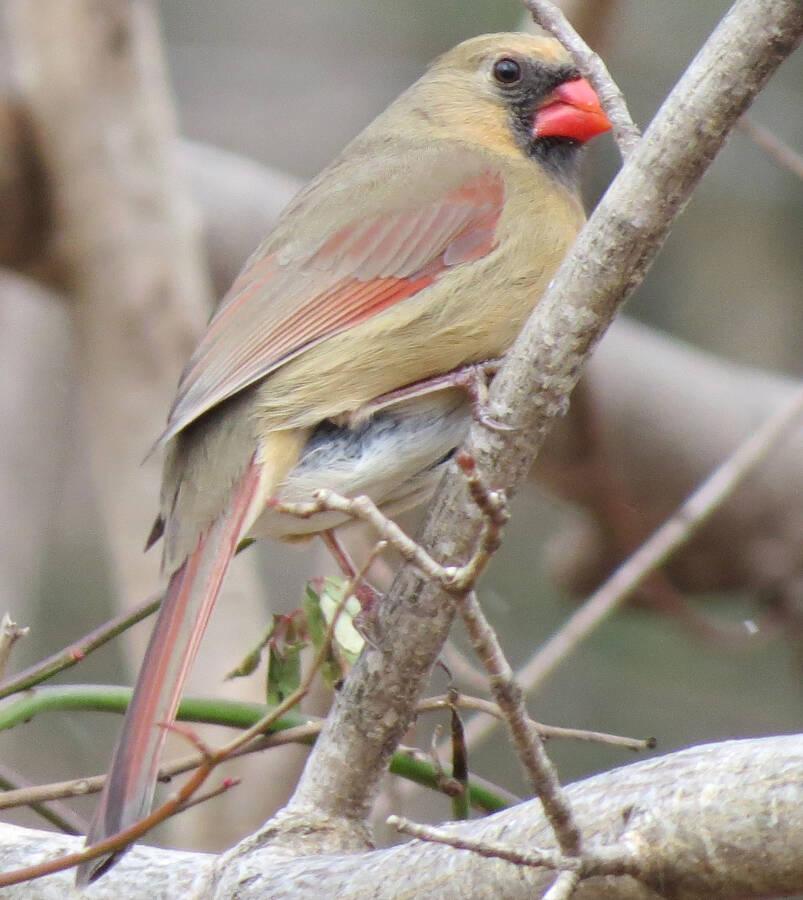
2024-01-31
Results are in from the White Point Christmas Bird Count
The White Point Christmas Bird Count took place on Dec. 15, 2023.
Conditions were not optimal, with winds ranging from 36 to 54 km/h. The winds made it hard to find birds and there was not a lot of waterfowl compared to other years.
We had two teams only in the field consisting of five people and one feeder watcher. Considering the strong winds we did well, with 61 species of birds numbering 1,713. This number is very low.
Missing were red-breasted nuthatch, green-winged teal, red-throated loon and great cormorant. We added three species which had never been seen on past counts. They were the harlequin duck, marsh wren and northern harrier.
We had a high count for common goldeneye with 56. There was a high count for northern cardinals with 27. Twenty-three of these birds were at one location in the Baptist Cemetery in Liverpool. We had a lot of low counts. Numbers of woodpeckers were way down.
For the downy woodpecker, our high in the past was 19 with a minimum of one. On the count day we had only two. For hairy woodpecker our past high was 14. On the day of the count we had one, which matched the all time low.
For northern flickers historically our high was seven. The minimum number for this species was five. On the count day we only had two, so an all time low. We had the lowest count ever on black-capped chickadees with only 30. Our high count one year was 189.
For the dark-eyed junco, our previous high was 104 with a low of one for the minimum. For this count we only had two. We had a low count for purple finches with only one and only one Iceland gull. We only had two mourning doves which is extremely low.
The following is a complete list of all the birds that were found: Canada goose 39, American wigeon 8, American black duck 76, mallard 84, ring-necked duck 1, greater scaup 9, common eider 16, harlequin duck 3, surf scoter 33, white-winged scoter 2, black scoter 17, long-tailed duck 27, bufflehead 59, common goldeneye 56, hooded merganser 10, common merganser 3, red-breasted merganser 13, common loon 12, horned grebe 10, red-necked grebe 3, double-crested cormorant 9, northern harrier 1, sharp-shinned hawk 1, bald eagle 4, red-tailed hawk 1, shorebird species 1, thick-billed murre 2, razorbill 1, black guillemot 3, Bonaparte's gull 1, ring-billed gull 3, herring gull 591, Iceland gull 1, great black-backed gull 52, rock pigeon 30, mourning dove 2, downy woodpecker 2, hairy woodpecker 1, northern flicker 2, blue jay 29, American crow 89, common raven 5, black-capped chickadee 30, white-breasted nuthatch 4, marsh wren 1, golden-crowned kinglet 6, ruby-crowned kinglet 1, American robin 27, European starling 170, snow bunting 1, pine warbler 3, yellow-rumped warbler 20, dark-eyed junco 2, white-throated sparrow 41, song sparrow 10, swamp sparrow 2, northern cardinal 27, red-winged blackbird 1, common grackle 2, purple finch 2, and American goldfinch 51.
Joe Dillon of Bridgewater told me that the Baltimore oriole that had been visiting since late December had a close call. On Jan. 18, when Joe put out the suet the oriole came right in. About a half hour later there was a great kerfuffle and Joe witnessed a hawk flying toward his porch.
His heart sank as he realized the hawk was after the oriole. The hawk saw Joe and flew off, but the oriole just sat on the porch. Joe put some suet in front of the oriole and some water and his wife put the oriole on a towel and covered it up with a box with a hole cut out so that hopefully, if the oriole recovered, it could walk out.
The oriole just appeared to be stunned. It appeared bright eyed and outwardly looked unharmed. After a time the oriole left on its own and went under the deck. The oriole reappeared two days later on Jan. 20. Now however, it is spending a lot of time on the ground and appears to be favouring one wing. It was able to make it up to the suet to feed though at the usual location.
Linda Wentzell reported that on Jan. 20, she, Susan Wile and Joel Wentzell saw 13 species on a walk along the Smeltzer Road in Mader's Cove. One of these species was a Baltimore oriole and this was their third sighting in a row of this bird.
The other species observed that day were dark-eyed juncos, blue jays, mourning doves, a song sparrow, a northern cardinal, a northern flicker, American robins, European starlings, a common raven, American crows, and a hairy woodpecker.
Patricia Watson let me know that the following birds are visiting her feeders in East LaHave: white-throated sparrows, a white-crowned sparrow, a male northern cardinal, 16 evening grosbeaks, American goldfinches, dark-eyed juncos, mourning doves, blue jays and occasionally a downy woodpecker and a white-breasted nuthatch.
David Bell located a clay-coloured sparrow at Upper First Peninsula on Jan. 2. A lot of us birders, including myself have tried to locate this sparrow a number of times since then without success. On Jan. 20, I was walking up the road for Upper First Peninsula and there it was right in the open.
Kevin Lantz found a razorbill on the Lunenburg waterfront. He also had Bohemian waxwings and two cedar waxwings along the Back Harbour Trail in Lunenburg. Lise Bell sighted the house sparrows in Lunenburg along Prince Street. She also had a Barrow's goldeneye at First South.
Lynnette Barnes spotted a razorbill at Green Bay. The pink-footed goose that had been tending at First South was seen by Mary Kennedy in Lilydale on Jan. 22. She also found a glaucous gull at Blandford.
On Jan. 16 Angela MacDonald reported seeing over 600 pine siskins at Wine Harbour. On Jan. 22 she had a palm warbler at the Port Bickerton Lighthouse. At the time of writing the mute swan still continues at Pickney's Point and the gray heron was still at Ste. Anne du Risseau.
You may reach me at 902-693-2174 or by email: jrhbirder@hotmail.com.






